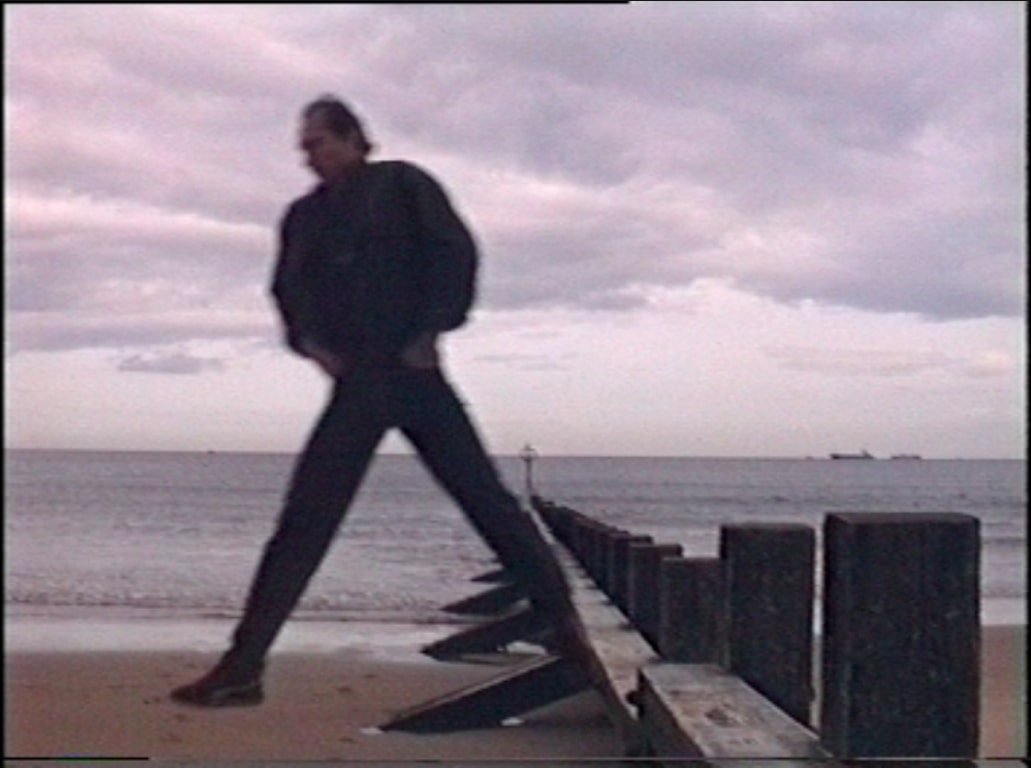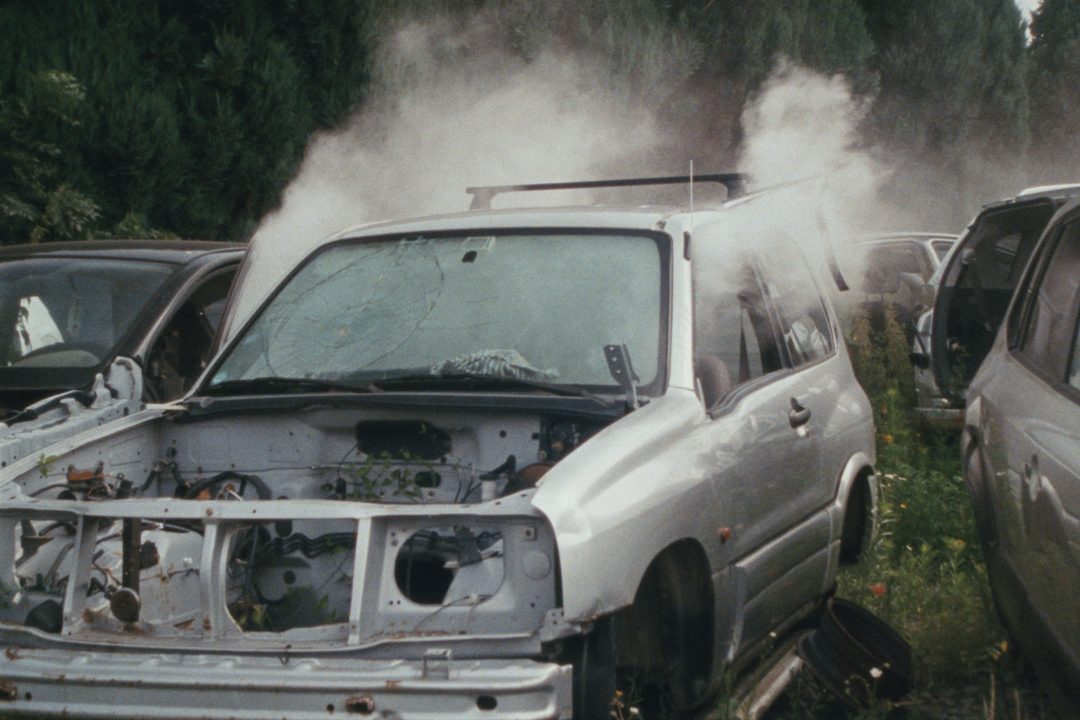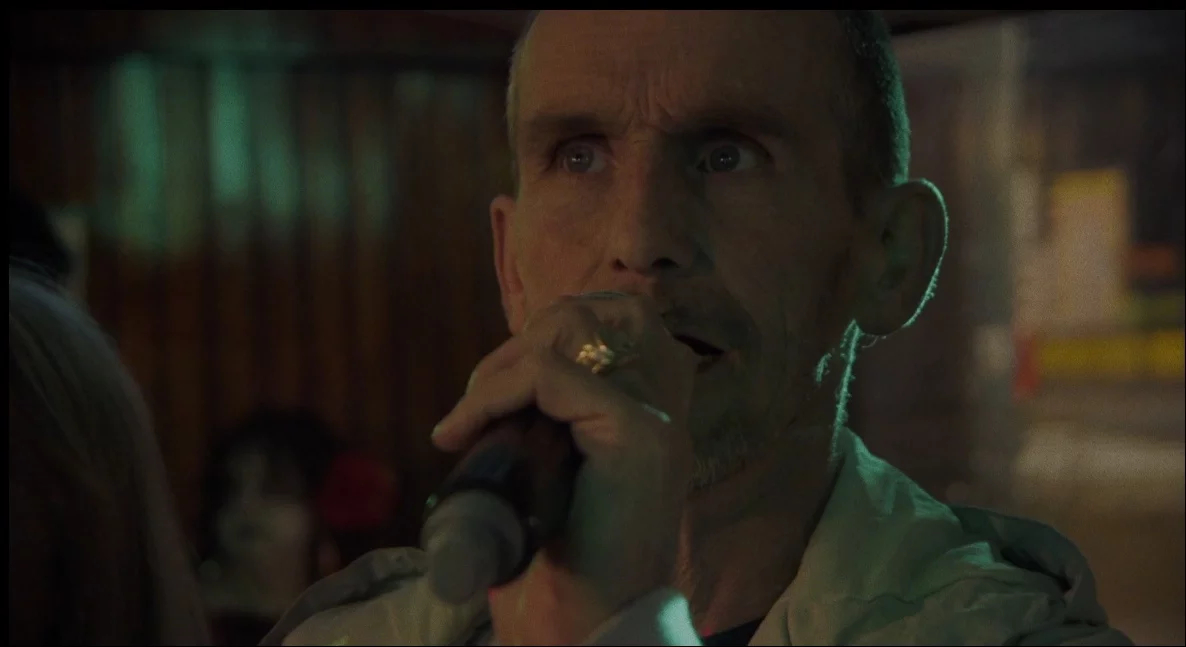April 27th 2024
Film Review
ENG
Four films from this year’s edition of Switzerland’s most important non-fiction film festival – which employs innovative formal means and various types of archives, covering all corners of the world.
For several years now, my springs have turned into the season of documentary cinema – not only thanks to One World Romania, whose online edition has just ended but also thanks to Visions du Réel, which, continuing its tradition from previous years, has made its selection available online to journalists this year as well. The dozens of hours I spent over the past week or so on the festival platform – hopping between its feature and short film competitions – confirmed that, from a curatorial standpoint, the festival continues to be one of the active promoters of the formal redefinition of non-fiction cinema in this decade through its choices: here, the essay film, montage film, and hybrid film are no longer mere “niches”, one or two titles appearing as a strange delicacy in line-ups otherwise dedicated to documentaries that prioritize theme over form, but they are strongly represented, major genres standing side by side with the “traditional” ones. And I couldn’t be happier about it – although, of course, as with any formal movement/trend that has emerged from some “underground”, some of the works that appear after this point may not seem as fresh and authentic, but the power of the most solid among them can in no way be denied.
Here are four of the films I liked best from the 2024 edition (two features, three shorts), which not only bring together some of the most important themes throughout this year’s selection (archives, technology, war, identity, trauma) but will surely continue their festival run over the coming year – hoping, of course, that they will be screened in Romania as well. A few special mentions: The Landscape and the Fury (dir. Nicole Vogele, winner of the Grand Jury Prize), Carropasajero (dir. Juan Pablo Polanco Carranza & Cesar Alejandro Jaimes), and De Gallo Qui Ovavit (dir. Nina Forsman) – unfortunately, Argentine master Martin Rejtman’s latest film Riders was not available on the platform, but I hope to see it first chance I get.
A Fidai Film (dir. Kamal Aljafari, Jury Prize in the Burning Lights Competition)

Palestinian filmmaker Kamal Aljafari confirms with his latest effort that he is one of the most important montage film auteurs of the moment – and that his deeply political approach to working with archives, which not only assumes a critical stance towards their “official” discourse but also direct interventions on the material, is the most effective method to illuminate the history of the Palestinian occupation, both in terms of the forced displacement of its population and the violent oppression suffered by those left behind, as well as the erasure of its memory and culture. A Fidai Film rounds off the explorations he began in 2015 with Recollection (where he reclaims the image of Jaffa and its Palestinian inhabitants), as well as this recent cycle of short films using footage shot by colonizers: Paradiso XXXI, 108 (made from Israeli military propaganda materials), and UNDR (which looks at the occupation and re-appropriation of Palestinian land). In the context of the invasion of Gaza, the film – and the very commendable award it received – gains an even greater urgency: because it deals with the contents of a Palestinian film archive that was destroyed and looted by the Israeli armed forces in 1982 during the siege of the Lebanese capital, Beirut.
The images in A Fidai Film – “the camera of the dispossessed”, based on a concept coined by Aljafari – cover a time horizon spanning several decades, starting with the years of the British Mandate of Palestine (despite repression, we still see images of a peaceful and thriving culture), going through the Nakba and multiple wars after 1948, up to the present day (thanks to a short but highly impactful epilogue). What is chilling about the recovered archive footage is the recurrence of images and situations that we see “recreated” today: from refugee camps where one can notice UN/UNWRA logos and images of bombed and burned settlements (and also of victims, dead, prisoners of war), to violent expulsions and expropriations, barricades, checkpoints, searches, and demolitions. (In an Israeli report during the assault on the archive in Beirut, a general says the following fateful words, of extremely bitter irony, to a journalist: “There is a large collection of images used for propaganda: refugees, a funeral, a picture of one of the PLO members executed by the phalangists, and so on.”)
Beyond this act of restitution – bringing images from the archive back into view – Alajfari makes a series of changes to the material, always in red. The captions/text fragments added by the colonizers are erased, in a gesture that rejects the official narrative of the occupation. Other elements are colored in red (such as the sea or the land, which become a symbol of bloodshed), while the faces of two actors in a kitschy romance movie are also covered, emphasizing the absurdity and inappropriateness of making such a film in an occupied land; ultimately, the very damages suffered by the film reels turn red, bloodstaining the entire image. But perhaps the most important element in the film’s formal construction is the poetic one: refusing an explanatory and expository approach, Aljafari “illustrates” instead with quotes from the writings of poet and revolutionary Ghassan Kanafani and musical fragments, giving the images an emotional texture all the more delicate, all the more painful (and what a title of breathtaking beauty: “The Land of Sad Oranges”). A Fidai Film is among the year’s most important films so far.
Fragments of Ice (dir. Maria Stoianova)
 Still from Fragments on Ice, by Maria Stoianova.
Still from Fragments on Ice, by Maria Stoianova.“You can hang yourself in these capitalist countries, everything is so expensive!” A sentence thrown in jest, yet so fateful: for the heavy wheel of history is moving slowly but surely towards the great final turn of the 20th century – the fall of the Soviet Union. Fragments of Ice is both a chronicle of those years and a family chronicle, captured on VHS tape. And even though this particular subgenre of the montage film has slowly started to become obsolete, Maria Stoianova’s debut is just as powerful as Agustina Comedi’s 2017 Silence Is A Falling Body, for example: relying on both the titular “fragments of ice”, i.e. an absolutely fantastic archive (mainly that filmed by the director’s father, occasionally supplemented by fragments from the Kyiv ice ballet troupe’s archive), and a voice-over narrative that deftly blends personal and family memory with various minutes, documents and official information.
For a Romanian spectator, however, the most striking aspect of these tapes filmed by the director’s father – a figure skater in an ensemble that, during the Glasnost era, traveled all over the world – is the perspective of a Soviet Bloc resident on the “capitalist” countries. Her father films malls and shops full of goods perhaps even more often than he films popular sights or small moments spent with colleagues (one hilarious scene shows the troupe almost missing their flight because everyone went shopping with the per diem paid in foreign currency); he even captures a protest in front of the Parliament in Athens, a scene which becomes all the more interesting as the gaze belongs to someone who sees such public political demonstrations as an impossibility. But the grass is not always greener on the other side (although in the Baltics and Georgia “you could find more goods”), as the saying goes: when he returns from Hong Kong, the figure skater says he’s fascinated by the huge class differences he saw there (“It’s fascinating how wealth and poverty coexist in such a compact space”); the most impressive sequence comes when an Estonian journalist, traveling on the same plane after the Baltic states gained their independence, starts arguing with a “communist on duty”: anticipating much of the political turmoil and polarisation of the nineties.
The travel footage is interspersed with fragments of home videos – moments when the baby slowly turns into a child, holidays, and celebrations, none of them spared by the storms of history (see the family’s flight from Kyiv after the Chernobyl accident, or the attempt to recruit the father as an undercover agent for the KGB). With the fall of the communist bloc – which the daughter and mother witness at home, watching the famous broadcast of Swan Lake on public television, while the troupe lives it in Australia, practically in another universe, almost like cosmonaut Krikalev – begins to fall apart all the life they had known until then. The gradual disappearance of the camera from the family’s life, along with many other sudden and radical changes, is perhaps the most telling symptom of the regime change. “The end of history never arrived,” Stoianova says bitterly off-screen, right at the end of the film – anticipating the violent annexation of Crimea and the onset of the war in 2014, then the 2022 invasion by Russian forces – all the more bitter as the credits open with the information that the film’s editor was killed during military service. Fragments of Ice breathes new life into the genre – and, like Otilia Barbara’s impressive debut, Love is Not an Orange, brings a welcome Eastern perspective on the home movie, with all its political and cultural complexities.
Crushed (dir. Camille Vigny)
 Still from Crushed, by Camille Vigny.
Still from Crushed, by Camille Vigny.In just over ten minutes, Camille Vigny creates one of this year’s most memorable and poignant films – employing an economy of means that, at first glance, seems disconnected. On the one hand, we have the visual aspect, which follows a demolition derby (a popular type of car race, with semi-destroyed cars) taking place somewhere in the Belgian countryside. On the other hand, we have the sound aspect, where we hear a testimony so candid, so devastating of an abusive relationship experienced by the director. But this apparent simplicity of the film’s setup, this disjunction between its two main tiers, is in fact a superb illustration of a psychological mechanism that often occurs among victims of domestic abuse: dissociation.
It’s a process that targets both the abuser (who is split into multiple guises, “reconciling” the major rift between the contradictory figures of the loved one and the aggressor) and the victim’s self (through depersonalization and derealisation, traumatic responses that detach, disconnect her from reality). Crushed turns this process into the film’s central metaphor, which unfolds like a bouquet of symbols and tertiary meanings: the intensity and speed of the race become a cipher for how quickly the narrator’s relationship comes to consume her, a fragile dance on the razor-thin edge between thrilling and dangerous, the rally as a form of ecstasy that turns in a split second into mortal danger. The refusal to visually address domestic abuse explicitly – a process that re-victimizes and invites voyeuristic positioning – recalls another remarkable short film, Vedo Rosso by Adrian Paci, presented at VdR in 2021. The two films mark an important paradigm shift not just regarding the representation of trauma, but also concerning the victim’s position within the film’s economy. From a passive figure, the victim becomes the one who steers the perspective, the narrator who regains control over her own story: and the story we hear Crushed is as devastating as its title suggests.
Les Rengaines (dir. Pablo Guarise)
 Still from Les Rengaines, by Pablo Guarise.
Still from Les Rengaines, by Pablo Guarise.At the end of every edition of Visions du Réel, I always keep with me a light-hearted film, whose approach is not so much political but rather anthropological (for example, Lobster Soup from 2021). And I must admit that I have a soft spot for documentaries whose “main character” is a bar, a café or – put bluntly – a pub. Such is the case with Les Rengaines, a playful documentary about Café La Perle, a karaoke bar in northern Brussels, whose loyal (and mostly elderly) clientele gathers every afternoon in a kind of social bastion that is on the verge of disappearing in the highly fragmented and atomized society of the post-pandemic world.
But this is not a nostalgic film, quite the opposite: its cheerful, celebratory tone is there from the very first scene, where one of the regulars laughs heartily at a singing lobster wagging its tail to Frankie Ford’s Sea Cruise – a toy joined by an Elvis bobblehead, a drumming Santa Claus, and various other musical trinkets that highlight the atmosphere of this lively and spirited place, where customers come to reconnect, sing about their (more or less fulfilled) loves, dance to rock’n’roll, and share their stories. “We’re killing time because routine kills,” one customer says at one point. But quickly catching the slight contradiction in his words, he comes around: “Routine is when you feel lost when can’t see the no way forward. But when you have a café, you know you always have a place to rest, be at peace, see your friends, and chat. And that’s life.” What better way to sum up this little humanist gem, a true balm for the soul in a world as polarised and atomized as that of the 2020s?

